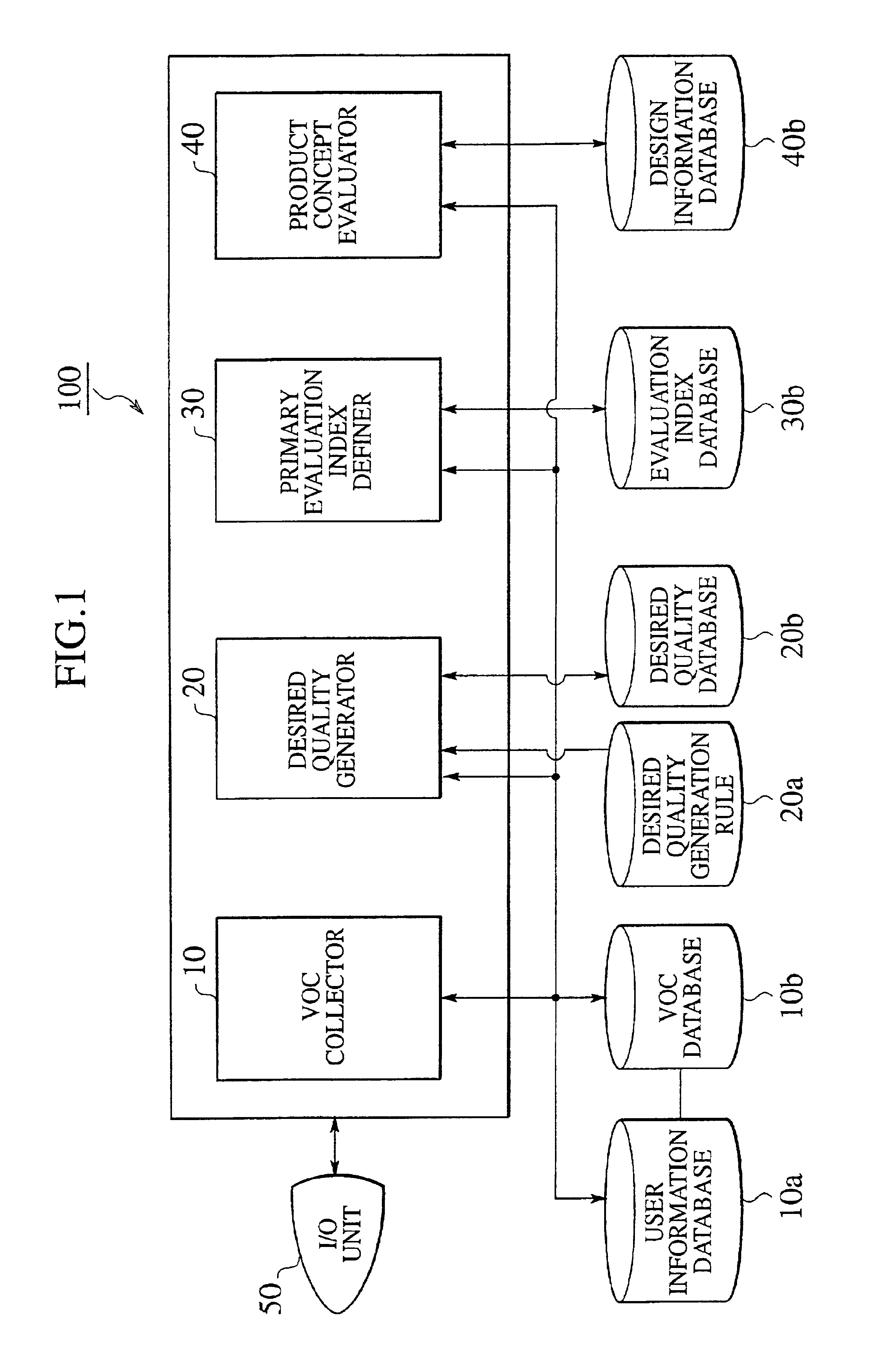Product design process and product design apparatus
a product design and process technology, applied in the field of product design process, product design apparatus, and recording medium, can solve the problems of not being able to achieve the performance demanded by the user in the voc, many products which could have been successful are not as well-received, and the windows of successful product entry on the market are often missed, etc., to achieve accurate capture and refinement, high degree of freedom, and rapid and easy to obtain
- Summary
- Abstract
- Description
- Claims
- Application Information
AI Technical Summary
Benefits of technology
Problems solved by technology
Method used
Image
Examples
first embodiment
[0043]Below, with reference to FIGS. 1 through 10, we give a detailed description of a product design process, a product design apparatus, and a computer-readable recording medium for storing a product design program which are respectively associated with a first embodiment of the present invention.
[0044]A first embodiment of the present invention provides functionality for analyzing VOCs containing wants and needs of users with respect to a particular product, for extracting therefrom true wants and needs (these being attributes that cause the customer to feel that he or she derives some benefit that lies latent in the product), for causing weighting of these true wants and needs by the user, and for using an evaluation index (primary evaluation index) which is highly correlated to these weighted true wants and needs to define a product concept.
[0045]FIG. 1 is a block diagram showing the functional configuration of a product design apparatus associated with a first embodiment of th...
second embodiment
[0130]Below, with reference to FIGS. 11 through 20, we give a detailed description, focusing only on those areas which are different from the first embodiment, of a product design process, a product design apparatus, and a computer-readable recording medium for storing a product design program which are respectively associated with a second embodiment of the present invention. Furthermore, the configuration of the product design apparatus associated with the second embodiment is similar to the configuration of the product design apparatus associated with the first embodiment shown in FIG. 1. In the descriptions that follow, elements similar to those present in the first embodiment are given the same reference numerals as were used there and repetitive description of those elements is omitted here in the interest of brevity.
[0131]One aspect of the second embodiment is a product design method which is similar to the method associated with the first embodiment but which is particularly...
PUM
 Login to View More
Login to View More Abstract
Description
Claims
Application Information
 Login to View More
Login to View More - R&D
- Intellectual Property
- Life Sciences
- Materials
- Tech Scout
- Unparalleled Data Quality
- Higher Quality Content
- 60% Fewer Hallucinations
Browse by: Latest US Patents, China's latest patents, Technical Efficacy Thesaurus, Application Domain, Technology Topic, Popular Technical Reports.
© 2025 PatSnap. All rights reserved.Legal|Privacy policy|Modern Slavery Act Transparency Statement|Sitemap|About US| Contact US: help@patsnap.com



